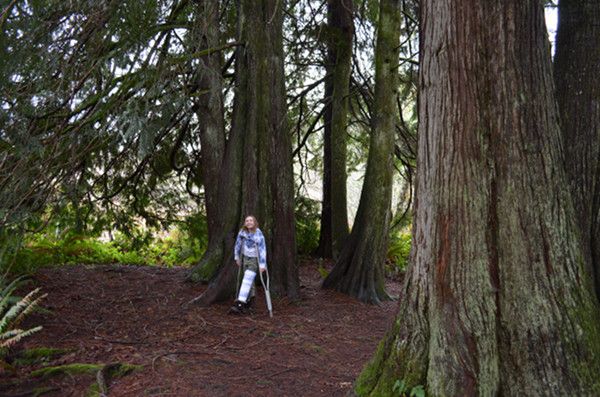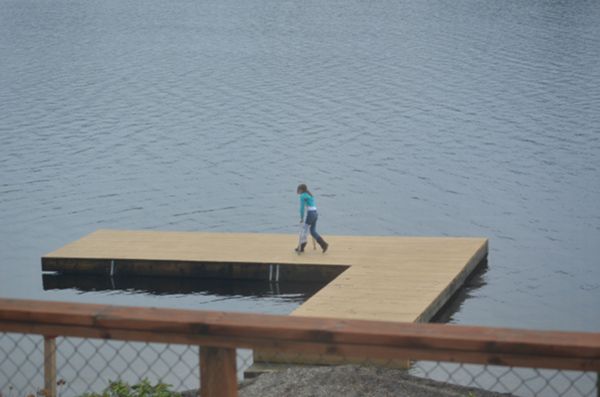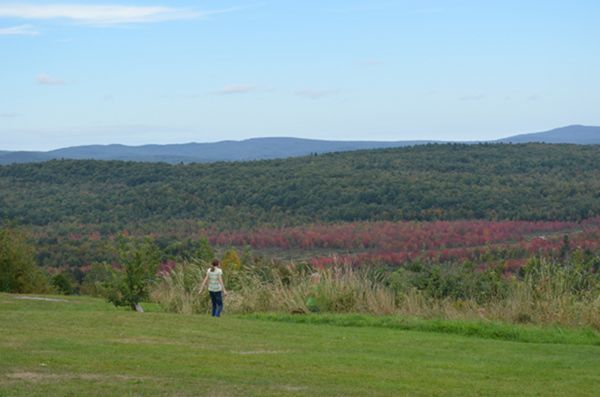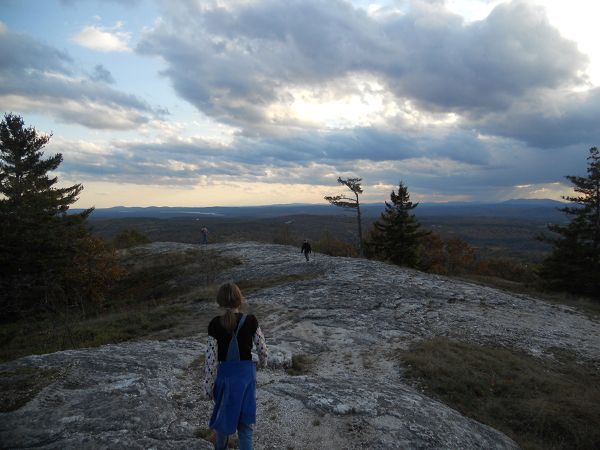What do you do when a piece of your life is suddenly interrupted by the unexpected? Do you embrace the near force to shift and move in another direction or do you plow straight ahead, regardless of the consequences? Recently, we were standing face to face with these two questions with no preparation…no training…no parenting class that says, “This is what you should do.”
The Story
In December, our oldest (10) daughter came home from her ballet class complaining of minor knee pain. She rarely complains about anything so, when she does offer a complaint, we pay attention. After assessing her knee, and seeing no visible injury, we decided that she probably just twisted it at class. She babied her knee with ice and heat for a couple of days, but the pain did not subside; in fact, it got worse. After one week, we took her to see the on-call pediatrician. He said it was knee strain, told us to alternate the heat and ice for another week (at which time he expected she would be better). Three days later, she was in so much pain that she could not walk. She was going up and down stairs on her bum. She was crying at night because she was in so much pain. We took her back to the pediatrician the next morning. They ordered x-rays of both her knees and both her hips. The x-rays came back normal. They scheduled an appointment with a pediatric orthopedist for 3 weeks later. We left the doctor’s office with a distraught little one, and too many unanswered questions.
I am an advocate for my children’s health, and I do not sit idle when something is wrong. I could not wait another 3 weeks to get answers. So we contacted a cardiologist friend of ours. He called in a favor for us immediately to a very well-known orthopedist in the area. We went over to his office that very day. He examined her, and diagnosed her on the spot with Sinding-Larsen-Johansson syndrome (I’ll explain what this is in a bit). He gave her an immobilization brace and crutches then sent her for an MRI.

The Syndrome
A week later, we saw him again. The MRI confirmed his diagnosis, but was worse than he initially thought. Here is where I do my best to explain what Sinding-Larsen-Johansson (SLJ) syndrome is (remember I am not a doctor, nurse, nor have I ever worked as a health-care professional). From talking with her orthopedist and my own personal research, this is what I discovered. It is an uncommon (although becoming more common) syndrome that typically strikes kids ages 10-15 during any rapid growth period. SLJ is not considered a trauma injury but an overuse injury. It is an inflammation of the bone at the bottom of the patella (the growth plate) where the tendon from the tibia (shinbone) attaches to the kneecap. The risk for SLJ syndrome increases when children are overly active in sports during large growth spurts. Basically the body simply cannot handle the stress of growing and the repetitive motions of sports (in our case, it was ballet). The repetitive motion on the patellar growth plate causes stress, and in some cases (like our dear daughter), the growth plate cannot handle the stress and becomes inflamed.
Simple inflammation would be considered a minor SLJ diagnosis. Our daughter had gone from simple inflammation to the patellar tendon actually tearing away from her bone. The orthopedist was very clear that, had we not been proactive, her tendon would have torn away completely, and she would have needed surgery to fix the problem. Instead, she was confined to an immobilization brace and crutches for nearly 8 weeks, which only slowed her down at the beginning. She eventually got used to the crutches and was whizzing around everywhere. Kids learn so quickly.

Moving Forward
As a family, we were visiting the doctor every week (a huge change for a healthy family like our own). My daughter had multiple x-rays, MRIs, and over 20 different health care professionals examine her. All of this, along with the looming question: “Will I ever be able to do ballet again?” Since she was three, she has wanted nothing more than to be the “prima ballerina.” She has never let go of that dream and took her dance very seriously. We were at a crossroads. Do we rob our daughter of this very precious dream or do we allow her to continue (once completely healed) to see where she goes with this?
After much discussion, we decided to “rob” her of her dream. When I say “we” I mean all of us together. She decided, along with us, that ballet is not a healthy sport for her body and that she did not ever want to experience the pain and limited activity that she has experienced over the last few months, and she still has months of healing to go. She cannot run without pain (whereas last year she was running over 2 miles, a few times a week, with me). She cannot jump or dance without discomfort. Her gait has changed; she still favors the injured knee as she learns to trust her body to carry her again.

So much of this syndrome is hard to understand. What I do understand is that my culture tells me that my children need to be enrolled in sports all year round for their health. After this injury, my research tells me that my children need to be given the freedom to move, run, jump, and that does not need to come within the confines of sports. The repetitive movements that are required to master a sport can be very damaging to a child. It will take one full year for her body to completely heal from this one incident. We will return for another doctor’s appointment at that time to have her re-evaluated because the ultimate concern is that she will tear that tendon completely away which will affect her for her entire life.
How do we, as a family, move forward from here? How do we continue with our active lifestyle all while making sure that our children’s bodies are given the space to be strong and healthy? Exercising together is important to us.

Our children are no longer involved in any sport that stretches their body to move in an un-natural way. We run in a grass field and not on the road. We hike together and go at the pace of the slowest person (which happens to be my 3 year old right now), and we let go of the idea that our children need to be involved in organized sports to be healthy. We let go of the idea that our children need to be part of a larger team. We let go of the idea that sports promote health.
We embrace the idea that natural movement, connected with the earth promotes healthy, strong bodies. We embrace the idea that time spent hiking as a family is being a team, working together, problem solving, and encouraging one another. We embrace the idea that our bodies were meant to move in certain ways, and our bodies resist moving in other ways. We embrace the idea that our bodies will tell us when something is wrong, and we choose to listen. We embrace our children, and, although we cannot protect them from everything, we can make informed decisions. We can step outside of cultural norms in order to keep them healthy and strong.
I am not opposed to organized sports; I am not opposed to activities. I am not saying that we will never participate in sports (we all did track last year and loved it and will probably do it again in the future). I am saying that, as children grow, their bodies are strong yet vulnerable, and I want to do everything possible to make sure that I give my children a solid foundation for a healthy future.
There is more to this story than a simple injury. There is a life lesson; one that my 10 year old handled very gracefully. A lesson about living life vibrantly and full to overflowing; a lesson in giving up something that seems good at the moment for the benefit of a full, healthier life.

